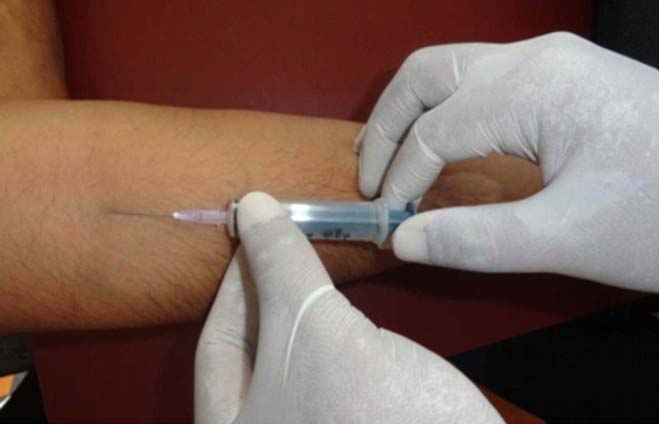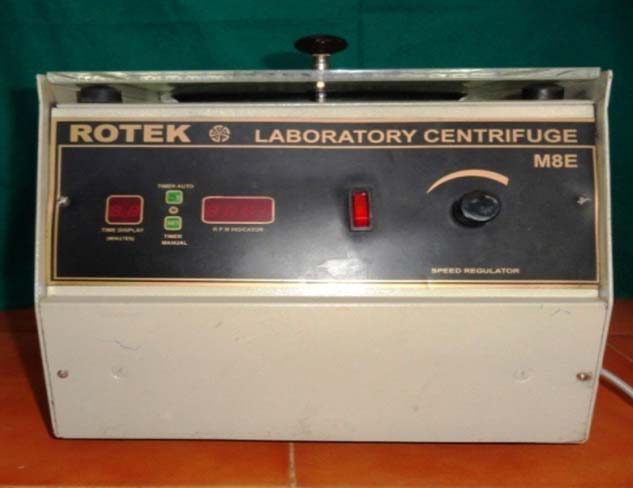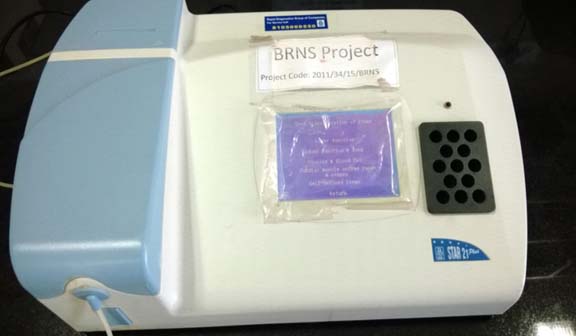Type 2 diabetes mellitus and chronic periodontitis are two chronic diseases that have been considered to be biologically linked [1] and their pathobiology implicates the role of oxidative stress [2]. Living cells are exposed to oxidants from a variety of sources like air pollutants, chemicals, toxins and pathogenic bacteria [3]. Antioxidants and essential nutrients have proved to delay or prevent oxidation of susceptible substrates [4]. Also, studies have proved that essential macronutrients like magnesium play a crucial role in many physiological functions [1] and its imbalance has been associated with a number of pathological conditions [5].
Proinflammatory cascades that cause tissue damage is increased in inflammatory conditions like periodontitis and type 2 diabetes mellitus [6]. Earlier studies have determined and related serum magnesium to periodontal parameters [1]. Also, studies have shown magnesium depletion frequently observed in patients with diabetes [7]. Studies have shown that magnesium supplement has a beneficial effect on periodontitis [1]. Impaired magnesium homeostasis may favour the onset and progression of type 2 diabetes mellitus [7]. Hence, it is of prime significance to conduct more in-vivo studies in humans to relate the association of magnesium with diabetes and chronic periodontitis.
Inflammatory biomarkers in the blood are measured to recognize subclinical infection during an infection or tissue damage. Biomarkers of inflammation commonly are cytokines and acute phase proteins. Plasma concentration of several important nutritional biomarkers is also influenced by inflammation including vitamin c, zinc, iron etc., [8]. To correlate the influence of serum magnesium in the resolution of inflammation, this interventional study conducted scaling and root planing among test groups and compared their serum magnesium level at baseline to serum magnesium after 21 days of scaling and root planing.
Materials and Methods
A single blinded, randomized study was conducted in the Department of Periodontics at A.B. Shetty Institute of Dental Sciences, Mangaluru, Karnataka, India. Ethical clearance for the study was obtained from the institutional ethical committee. Based on the existing literature, sample size estimation was done assuming minimum difference in magnesium level of 0.3mmol/l [9]. The subjects were randomized into four groups of 30 patients in each group. Test groups included: a) 30 patients (group A) diagnosed with chronic periodontitis; b) 30 subjects (group B) presenting and diagnosed with type 2 diabetes mellitus; c) 30 subjects (group C) presenting and diagnosed with chronic periodontitis and having type 2 diabetes mellitus; d) 30 subjects (group D) healthy controls without periodontal or systemic disease. The criteria for selecting chronic periodontitis patients was, according to 1999 American Academy of Periodontology classification [10] and diabetes mellitus patients were, according to the American Diabetes Association Classification [11]. The purpose of the study was explained to the patients and written informed consent was obtained. Subjects aged between 25 to 60 years with ≥ 20 teeth present in the oral cavity were included in the study. Patients with a history of any antibiotic/anti-inflammatory therapy in past three months prior to the study or having a history of any systemic disease or condition, subjects who had undergone any periodontal therapy three months prior to study, pregnant/lactating women, smokers and tobacco chewers, subjects with history of vitamin, minerals and antioxidant supplements for more than three months and uncontrolled type 2 diabetes mellitus patients were excluded from the study.
On clinical examination, Gingival Index [12] and Plaque Index [12] and probing depth were recorded at baseline for all the patients included in the study. Blood was drawn [Table/Fig-1] before starting any treatment to assess the serum magnesium levels (macronutrient) using semi-autoanalyzer. Scaling and root planning was done and oral hygiene instructions were given to the test group and they were recalled 21 days after the treatment. Attempts were made by the investigator of the study to ensure that all the subjects completed the study uneventful, but out of 120 subjects only the following subjects reported during follow-up, which included group A-25 subjects, group B-25 subjects, group C-25 subjects and group D-30. On the day of follow-up the patients showing no decrease in the plaque and Gingival Index scores from the previous score was excluded from the study. Blood was again drawn on the day of follow-up [Table/Fig-1] from the test group and sent for analysis.
Photograph showing collection of venous blood for the study.

Venous blood (5ml) was drawn from the patient and later centrifuged [Table/Fig-2]. Then 5ml of serum was mixed with 1000μl of xylidyl blue and incubated for 5 minutes at room temperature. The semi-autoanalyzer was used to measure absorbance of serum magnesium sample [Table/Fig-3] and calculated using the following formula: Serum magnesium (mg/dl) = absorbance of sample/absorbance of standard x concentration of standard.
Photograph showing centrifuge machine used for the biochemical analysis.

Photograph showing semi autoanalyser used for the study.

Statistical Analysis
The collected information was summarized by using the descriptive statistics such as frequency and percentage of qualitative data, mean and SD for quantitative data. To compare the outcome measures inferential statistics such as one way ANOVA (>two groups), independent sample t-test (two groups) and paired t-test (pre and post) were computed. The ANOVA results were further analyzed by using the post-hoc Tukey test. The p-value<0.05 was considered as significant. Data management and analysis were performed by using Microsoft Excel and SPSS-21 (SPSS Inc., Chicago, IL, USA).
Results
The mean serum magnesium level in group D was 1.04±0.565mmol/L when compared to group A, group C, group B which showed 1.01±0.287, 0.920±0.231, 0.93±0.29 respectively [Table/Fig-4]. One way ANOVA showed statistical significance in all parameters between groups and within groups (<0.001) [Table/Fig-4]. Post-hoc tests showed a statistically significant difference in the levels of serum magnesium among healthy v/s diabetes with periodontitis group and healthy v/s diabetes without periodontitis (p<0.001) [Table/Fig-5]. The student paired t-test showed a significant difference in mean serum magnesium levels postoperatively when compared to the baseline values in the three groups [Table/Fig-6].
Mean and standard deviation of serum magnesium in mmol/l at baseline. Quantitative analysis of magnesium done using ANOVA.
| Group | n | Mean | S.D. | F-value | p-value |
|---|
| Healthy | 30 | 1.04 | 0.565 | 9.38 | < 0.001 |
| Healthy with Periodontitis | 25 | 1.01 | 0.287 |
| Type 2 Diabetes Mellitus with Periodontitis | 25 | 0.920 | 0.23 |
| Type 2 Diabetes Mellitus without Periodontitis | 25 | 0.93 | 0.29 |
ANOVA test shows significance in all parameters between groups and within groups since p<0.001.
Comparison of serum magnesium level between the groups using Post-hoc analysis.
| Groups | Mean difference | Std Error | p-value |
|---|
| Healthy v/s Healthy with Periodontitis | 0.38 | 0.104 | 0.002<0.05 |
| Healthy v/s Diabetes with Periodontitis | 0.482 | 0.104 | <0.001 significant |
| Healthy v/s Diabetes without Periodontitis | 0.465 | 0.104 | <0.001 significant |
| Healthy with Periodontitis v/s Diabetes with Periodontitis | 0.093 | 0.104 | 0.806 i.e.,>0.05 |
| Healthy with Periodontitis v/s Diabetes without Periodontitis | 0.077 | 0.104 | 0.881 i.e., >0.05 |
| Diabetes Periodontitis v/s Diabetes Healthy | 0.166 | 0.104 | 0.999 i.e., >0.05 |
Pre- and post- treatment comparison of serum magnesium level.
| Group | Visit | Mean | S.D. | t-value | p-value |
|---|
| Healthy with Periodontitis | Pre-opPost-op | 1.0141.341 | 0.28 | 9.629 | <0.001 significant |
| Type 2 Diabetes with Periodontitis | Pre-opPost-op | 0.921.20 | 0.2350.361 | 0.187 | <0.001 significant |
| Type 2 Diabetes without Periodontitis | Pre-opPost-op | 0.931.07 | 0.290.23 | 0.0418 | <0.001 significant |
Discussion
The structure and function of mitochondria are disrupted due to free radicals, which in turn triggers numerous diseases like type 2 diabetes mellitus [13], also Chapple IL has stated in his literature the role of oxidative stress in chronic periodontitis [14]. When antioxidant system is unable to efficiently counteract the action of free radicals and reactive oxygen species which are essential for many physiological processes, tissue damage and progression of diseases like chronic periodontitis and type 2 diabetes mellitus occurs [14]. It has been reviewed in the literature that plasma concentration of several important nutritional biomarkers, like retinol, vitamin D and vitamin C are reduced during an infection [15].
Human studies have revealed a high occurrence of metabolic syndromes like type 2 diabetes mellitus in subjects having low serum magnesium [16]. Epidemiological studies have also shown that subjects taking magnesium supplements showed a less attachment loss and improved periodontal health [17]. A clinical study done by Thomas B et al., showed that serum level of micronutrients like copper, zinc and iron are decreased in type 2 diabetes mellitus patients with periodontitis as compared to healthy [18].
Similar studies which were conducted among diabetic patients with and without periodontitis and also with only periodontitis showed significantly decreased serum magnesium when compared to healthy [19]. The present study was an interventional study which makes it different from the earlier studies. The result of the present study also demonstrated an increased mean serum magnesium in healthy as compared to test groups and it showed a significant statistical difference [Table/Fig-4]. Increased oxidative stress in conditions like diabetes and periodontitis is bidirectionally related to the serum magnesium level. Earlier literature also states that individuals with diabetes have lower serum magnesium [19]. Albeit in his study explained the relationship between periodontal status and magnesium ratio, and the result showed that the reduced serum magnesium concentration was associated with enhanced inflammatory response to bacterial challenge [17]. Guerrero-Romero F and Rodriguez Moran M, said that there is a strong relationship between decreased serum magnesium and metabolic syndromes. Possibly, there is an inter-relationship between the magnesium deficit observed in subjects with high blood sugar and that in those with periodontitis [16]. The result of the present study as shown in [Table/Fig-5], revealed that serum magnesium in healthy subjects was more when compared to periodontitis or diabetic patients. Hence, this was consistent with previous studies [16,17,19]. With the resolution of inflammation after 21 days of scaling, improvement was seen in serum magnesium level postoperatively when compared to baseline values which showed statistical significance [Table/Fig-6]. Thus, it implicates that reduction in inflammatory cascades after periodontal therapy restores the serum magnesium level which was depleted. This is consistent with earlier studies done by Mooren FC et al., and colleagues who showed a strong relationship of magnesium status with the immune system. Here, they described the role of magnesium as a modulator of the immune response [20]. The significance of serum magnesium in immune response is also stated in the literature where it showed magnesium deficiency during activation of neutrophil [17]. Interventional study where oral magnesium supplementation was given to the test group showed a beneficial effect in reducing the loss of bone level [21] and improving periodontal status. Thus, hypothetically it can be stated that magnesium has a significant role in the periodontal health aetiology in systemically healthy and diabetic individuals. Serum magnesium is also influenced by the role and influence of insulin hormones as shown in studies done on diabetic individuals [19], thus again serum magnesium proves its role in chronic periodontitis, since we all know that periodontitis is considered as the 6th complication of type 2 diabetes mellitus [22].
Limitation
A well planned study with larger sample size would give a better understanding regarding the correlation of serum magnesium to periodontitis and diabetes. The present study sample was small due to time constraints and loss of follow-up and thus making validity of the study questionable. However, with these limitations the present, study suggests physiological imbalances like diabetes or periodontitis can be clinically diagnosed by oral manifestations and symptoms; whereas subclinically, can be assessed by certain biomarkers. Serum magnesium values are influenced by increased oxidative stress which is seen during periodontitis and diabetes. Hence, a change in their values indicates that sub-clinically inflammatory cascades are increased or decreased during such pathological conditions like periodontitis and diabetes.
Conclusion
Magnesium is one among the essential nutrients, which is of prime importance for maintaining free radical formation, also for reducing oxidative stress. Since in our present study, the serum magnesium level was significantly reduced in diabetic patients and people with periodontitis, it can be considered as a biomarker which can be detected biochemically. Conditions like periodontitis and diabetes where oxidative stress plays the pathobiology, the importance of variation of serum magnesium is also of prime importance. Our study shows a strong relation to this condition and even showed improvement in its value, thus indicating the role of magnesium in the healing and maintenance of periodontal health. Since periodontitis and diabetes are both globally distributed, the study has to be done on a larger population, for longer duration to find its significance.
ANOVA test shows significance in all parameters between groups and within groups since p<0.001.